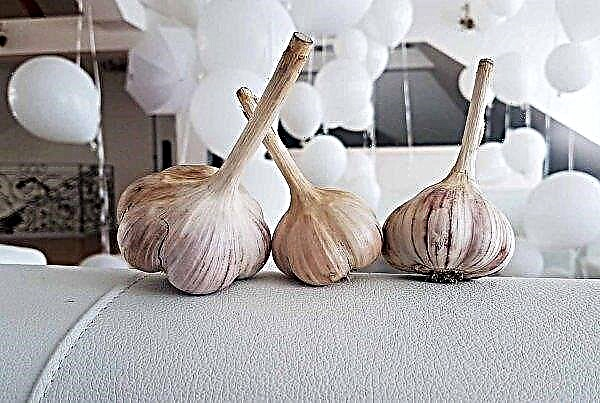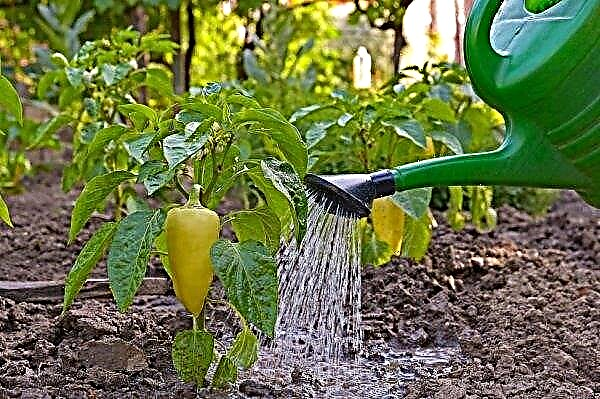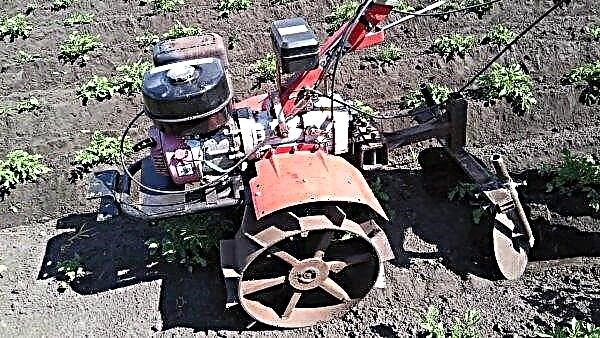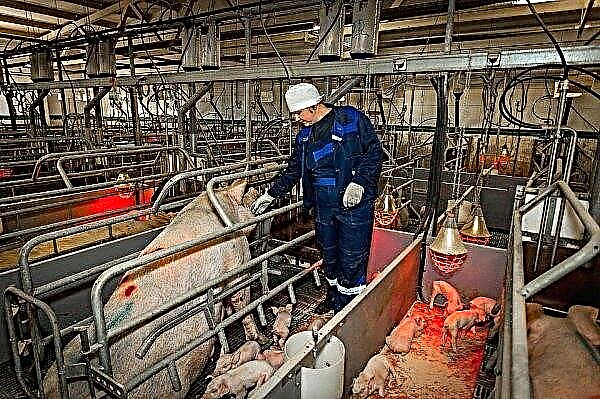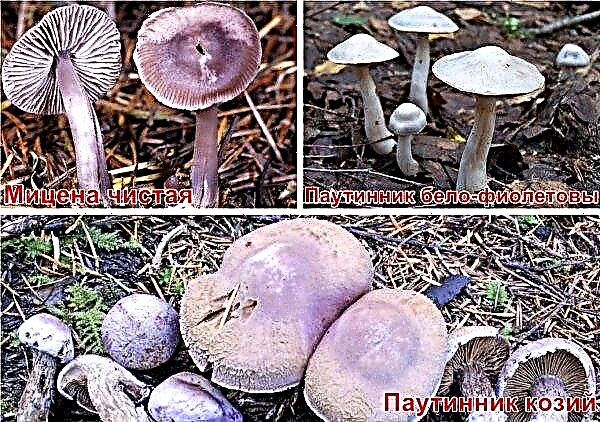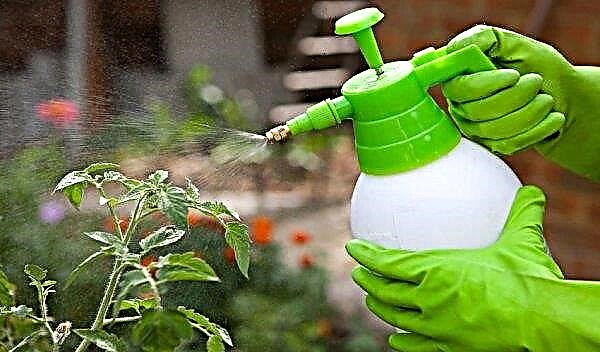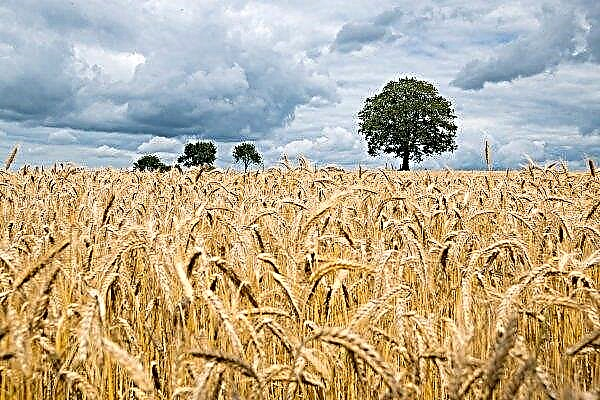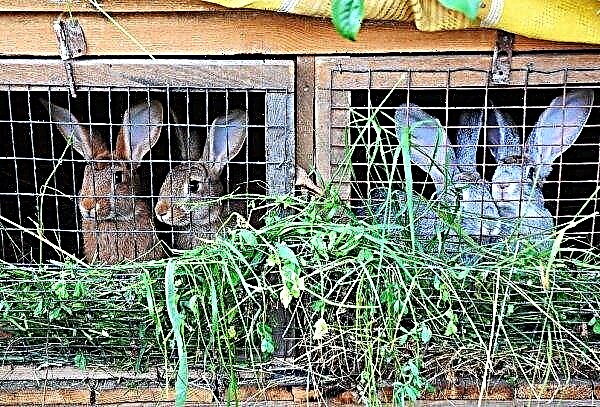Badan (Bergenia) is a very beautiful perennial plant with lush greenery and attractive flowers. In Russia, canoe can be found in cottages and personal plots. An evergreen plant is able to decorate the landscape almost all year round. The culture does not require reverent supervision and can be used not only as a decoration, but also as a remedy for certain ailments (for toothache, rheumatism, gastrointestinal tract diseases, urinary tract infections, as well as pneumonia).
Plant description
Badan is a perennial plant of the Kamchatka family. Under natural conditions, grows in the middle latitudes of Eurasia. Basically, he selects a rocky and rocky relief, which is the reason for the name of the family. As a cultivated plant began to be grown in the nineteenth century.
Small flowers (12 mm) are collected in racemose inflorescences and can have a different color: from white to raspberry and purple. Peduncles without leaves have a thick stalk 60 cm high. Flowering begins in late spring - early summer (May - June) and lasts 2-3 weeks. The leaves are large with a dense glossy surface, have a rich dark green color and at the base are collected in a rosette. At the end of the season, with the advent of autumn, the foliage turns red or turns brown, crimson, orange (the color changes starting from the veins and edges, and then the whole plate).
Did you know? Badan is a long-lived plant. In the wild, saxifrage can reach the age of up to 100 years or more.
Bergenia is resistant to drought and frost (up to -18 ° C). The roots are located horizontally, lie at a depth of half a meter from the surface of the earth. Culture tends to expand in width, which leads to the formation of thickets. A plant has the ability to drown out the growth of other crops when they fall into its growth zone.
Video: Description of the frankincense
Types and varieties of frankincense
Bergenia is divided into 2 subgroups at the place of their growth:
- Siberian-Far Eastern. These perennials have inflorescences of scarlet, lilac and bright pink. Leaves are not framed by down with smooth edges;
- Sino-Himalayan. Types of incense in this group have slightly pink and white flowers. Foliage has pubescence and margins with serrations.
Also, all plants of the Bergenia family are divided into types:
- Badan (Mongolian tea). Shade tolerant, loves moist soil. The stem without leaves grows up to 50 cm. The root system is branched, lies close to the surface of the earth. The leaves are large, juicy, bright green, young - small, adults - up to 30 cm in length and 35 cm in width. Flowers make up panicles and are usually bright pink. It blooms in June. The plant has healing properties. Thick canola can strengthen the walls of blood vessels and lower blood pressure, also has anti-inflammatory, antimicrobial effects.

- The incense is hearty. The plant has a very dense foliage of dark green heart-shaped. Flowering, like most types of incense, occurs in May. Inflorescences are usually lilac or deep pink in color, less often white.

- Badan is Pacific. Perennial has thick roots and large oval-shaped leaves and a diameter of 20 cm. Peduncles grow up to 40 cm in height. Bluebell-shaped flowers are lilac. Flowering period - May - June.
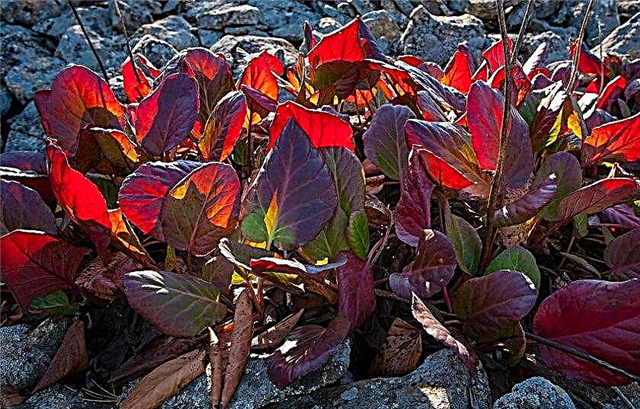
- Badan Strechi. One of the smallest members of the family. Peduncles grow no higher than 30 cm long. The leaves are bright green 10 × 3 cm in size. Blossoms for 2-3 weeks in May. Inflorescences are white or light pink in color.

- The incense is ciliated. Leaves round with “bristles” on the plate. The flowers are white or pale pink. With severe winter frosts, the foliage of the plant dies, but in the spring a new one grows quickly.
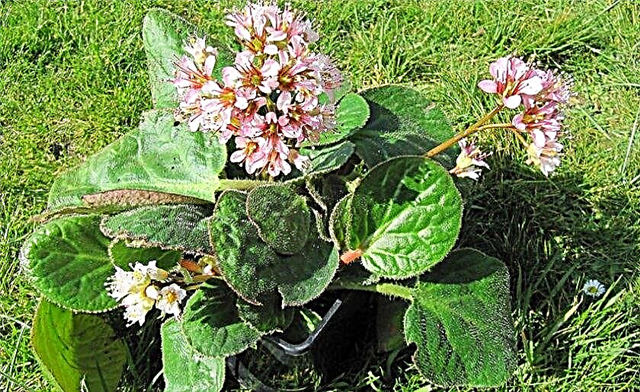
- Badmint Schmidt. Obtained by crossing the plate and ciliate species. The plant is strong, hardy. It has large dark green leaves, with serrated edges and fringe of hairs. The leaf can reach 25 cm in length. The flowers have a bright pink color.
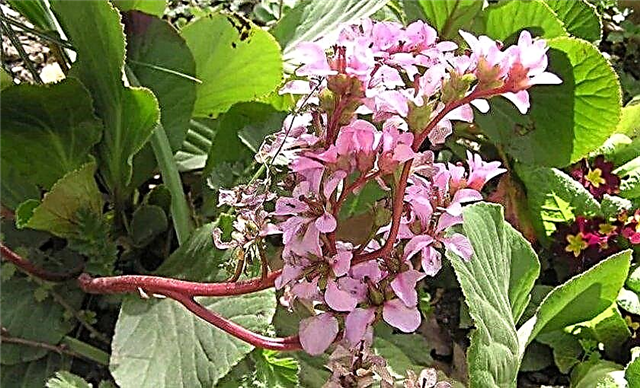
There are giant varieties (50 cm tall). These include Hidenuspe and Schneekofcnigin, Rothblum. Miniature varieties (height 30 cm): Abendglut, Baby Doll. Varieties Tubby Andrews and Galina Serova have the original motley color of the foliage. Breeders of many countries of the world do not stop working on breeding new varieties of culture.

Planting a Badan from Seeds
Culture propagates both vegetatively and by seed. Growing a plant from seeds is a lengthy process, such seedlings begin to bloom only in the third or fourth year after germination.
Did you know? Tea from the leaves of bergenia in Mongolia has long been used to treat depression.
Where to plant a frankincense - in the shade or in the sun
Badan is unpretentious and can grow both in the open sun and in dense shade. However, the most comfortable conditions for its growth are areas in partial shade. It is worth noting that in the shade and partial shade, the plant gives rich juicy greens, forming a continuous cover.

Lush bright inflorescences appear mainly with growth in sunny areas, but at the same time the bush itself remains quite modest with a small number of leaves and shoots. Also, when growing perennials in the open sun, it is necessary to monitor soil moisture and carry out regular watering.
How to plant a frankincense on a flower bed
Landscape designers use saxifrage when decorating alpine hills, flower beds and flower beds in the shade. Shallow rooting makes it possible to form rocky surfaces, walls and boulders with bergenia.
From spring to autumn, a correctly formed composition that combines deciduous, coniferous and evergreen crops does not lose its decorative effect. The following partners, such as ferns, junipers, evergreen mahogany, crocuses and blueberries, get on well next to the saxifrage.Important! Creeping, carpet-growing cultures (periwinkle, lily of the valley) are antagonists of bergenia and can drown out the growth of culture.

Sowing
Planting seeds should be just before the start of winter (in November). This is called the method of cold stratification, in which the survival and germination of sprouts is significantly increased. In a container with moist soil make furrows 0.5 cm deep, where the seeds are planted. The box with seeds should be taken out onto the street and sprinkled with snow. Snow cover will not allow seedlings to freeze and will keep the soil moist.
In early March, a container with seeds is transferred to a bright room with an air temperature of + 19 ° C, in which a high level of humidity is maintained. Three weeks later, the seedlings begin to hatch. They should not be fertilized. However, spraying with a growth stimulator is quite acceptable, which will allow them to quickly grow stronger.

Picking seedlings
Sprouts form slowly. In the first year, they form a rosette of 4-5 sheets. Seedlings need watering, shading, weeding from weeds. After one and a half to two months after hatching, young sprouts dive.
At the same time, they are planted 6-7 cm apart. Two weeks before transplanting into the open ground, hardening is carried out: young plants are taken out to fresh air first for 10 minutes, then for 15 minutes and then increase the time spent outdoors.
Transplanting
Planting seedlings is not a big deal. The step-by-step procedure is as follows:
- Since the second half of May, seedlings have been growing in containers in the open air.
- In the second year of growth, young saxifrages root in a permanent place. This should be done in mid-March.
- Before planting in open ground, a two-week hardening is performed with an increase in the time spent in the air.
- Before the planting procedure, seedlings should be watered with a complex mineral preparation.
- Landing holes are equiped with a size of 3 × 3 cm. The distance between the holes is maintained at 12 cm.
- After the seedlings are planted, it must be covered with plastic wrap. This will help protect plants in case of frost.

Open Field Care
Perennial unpretentious to care. However, if you want to have an exceptionally healthy and beautiful plant in the garden, you should properly care for it.
Watering
The roots of the plant are not particularly strong and are located shallow from the surface of the earth. To prevent drying out, it is necessary to mulch the trunk hole. For this, you can use sawdust, peat or needles. You can water the plant no more than once a week. Waterlogged soil leads to rotting of the rhizome and the appearance of fungi.
Transfer
Badan extremely rarely requires a transplant and can grow in one place even for 10 years. Frequent transplants make the plant weak. However, there are times when a transplant is necessary.
For example, if the saxifrage has grown and drowns out other plants. A transplant will also be required if the perennial thickets are too thick, which leads to a decrease in leaf size and a general weakening of the frankincense.

Culture is transplanted no more than once every 5-6 years. Do it in the fall in early September. In this case, the division of the bush is carried out, followed by the rooting of the divisions to a new growth site. Dividers are placed at a distance of more than 30 cm from one another, so that they do not interfere with each other's development.
What soil does frankincense love
Bergenia is not particularly demanding on soils. The culture feels best where the soil is light, fertile and moderately moist, has a slightly alkaline pH. If the soil is weakly acid, then the plant will adapt to it.
Important! The only option where it is impossible to grow a frankincense is a plot in a lowland with closely lying groundwater. Under such conditions, the rhizome of the plant will begin to rot.
In order to ensure that the growing conditions are close to natural, you can add sand, small stones and soddy soil to the soil at a ratio of 2: 2: 1 when planting.

Diseases and pests
Culture rarely suffers from disease due to its natural immunity. However, with improper planting and care, the plant weakens and may periodically suffer from fungal diseases. Brown spots appear on the top of the leaf plate.

The lower part is covered with a white coating of fungal spores. If a fungus is found, it is necessary to remove and burn diseased greens. The plant itself needs to be treated with a 2% solution of Bordeaux fluid.
Badan spared the attacks of pests due to the presence of a large number of tannins in its composition. The exception is nematodes and slobbering cicada. The use of insecticides such as Inta-Vir and Tsvetofos helps in the fight against cicada.
Processing is carried out immediately after flowering. Nematodes can be defeated by such compounds as Bi-58, Rogor and Nemafos. Spraying should be done at least three times with a break of 10 days, since the drug kills exclusively adult insects.
Badan after flowering
If after flowering is not planned to collect seeds for subsequent planting, wilted peduncles should be removed. You can simply cut them under the root with secateurs. They do this in order to strengthen the green mass of the plant, so as not to supply unnecessary components to the juice and useful substances.
Seed collection
After flowering of bergenia, a box filled with many seeds forms at the inflorescence site. The size of the seeds is about 2 mm. In order to collect seeds for the purpose of subsequent cultivation of the variety, it is necessary to determine the largest inflorescence. At the beginning of the wilting of flowers, a gauze should be worn on the inflorescence.
Thus, the seeds will remain in gauze and will not spill out onto the ground. You can collect seeds in September. The peduncle is cut below the gauze bag and placed in a dry room. Dry the seeds for a month. Then they are shaken and determined in a cool dry place for long-term storage.
Preparing for the winter
Saxifrage perfectly tolerates frosts down to -40 ° C. For winter, you do not need to cover the plant. However, with frost, wind and lack of snow cover, the leaves may be affected. In order not to disturb the decorative appearance of the site, you can cover the incense with fir branches for the winter. This will allow in the spring to get lush growth of lush greenery.
Badan is a strong, hardy, unpretentious plant. Cultivating a culture will not take a lot of effort and finances from the owner of the site. The decorative qualities of the perennial will help to decorate the homestead territory from early spring to late autumn. In addition, various parts of the plant are used in folk medicine in the treatment of many diseases, as well as in cooking. All this gives an occasion to do rooting of bergenia in your garden.







